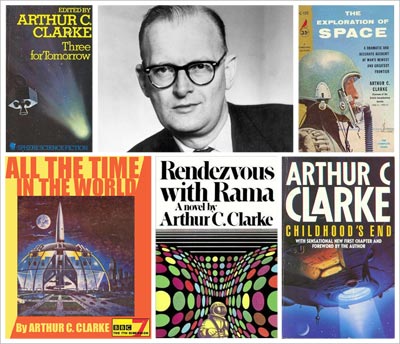As instructors at High Trails we are constantly trying to relate the material that we teach back to the student’s daily lives. Sometimes this is difficult, because not all students understand why topics like astronomy and space travel are relevant to their lives.
 One tactic I have used during Astronomy is to explain the relationship between science fiction and science. Have you ever read an article or looked at a piece of technology and wondered: “Where did they get the idea for that thing?” Well, lets take a look at how the ideas for technologies we use everyday have been influenced by some of the greatest science fiction minds of the past two centuries and of course Captain James T. Kirk of Star Trek.
One tactic I have used during Astronomy is to explain the relationship between science fiction and science. Have you ever read an article or looked at a piece of technology and wondered: “Where did they get the idea for that thing?” Well, lets take a look at how the ideas for technologies we use everyday have been influenced by some of the greatest science fiction minds of the past two centuries and of course Captain James T. Kirk of Star Trek.
 To begin, lets look at Jules Verne’s “From the Earth to the Moon.” In this book, written back in 1865, he tells a story about three men using a giant cannon to blast themselves into space and then crashing into the moon in a spacecraft. Though this was written as a comedy, Verne did some intense scientific and mathematical calculations on the feasibility of space travel and theorized about lessened gravity on the moon.
To begin, lets look at Jules Verne’s “From the Earth to the Moon.” In this book, written back in 1865, he tells a story about three men using a giant cannon to blast themselves into space and then crashing into the moon in a spacecraft. Though this was written as a comedy, Verne did some intense scientific and mathematical calculations on the feasibility of space travel and theorized about lessened gravity on the moon.
Decades later, inspired by “From the Earth to the Moon,” a Russian rocket scientist named Konstantin Tsiolkovsky released his rocket equation, known as Tsiolkovsky’s Rocket Equation.
His equation supported Jules Verne’s theory of space travel and limited gravity on the moon, but the equation did state that one would need a much larger cannon (or spaceship) than the author suggested in the book. Throughout Konstantin’s life, he taught future astronautic scientists his rocket equation, using Verne’s story as a way to relate the information to his students and pupils. In short, without Jules Verne imagining a way to travel to the moon the human race may still be grounded to the earth.
 The next author, Sir Arthur C. Clark, was a science fiction writer during the start of space travel (1950’s – 1960’s). He is heavily credited with influencing NASA and English Astronautic Scientists in developing satellites for global communication. His early writings included passages that described communication devices hovering in orbit to provide high-speed global communication.
The next author, Sir Arthur C. Clark, was a science fiction writer during the start of space travel (1950’s – 1960’s). He is heavily credited with influencing NASA and English Astronautic Scientists in developing satellites for global communication. His early writings included passages that described communication devices hovering in orbit to provide high-speed global communication.
Seven years later, the first man-made satellite, Sputnik, was launched. Today, the satellites that he inspired are used for much of the technology that the students use today (i.e. iPods, cell phones, online gaming, etc.), and the technology that scientists are using to further our understanding of astronomy.

Martin Cooper, Inventor
Oh, and if you are still wondering, how has Captain Kirk influenced you? The man who invented cell phones got the idea from a Star Trek episode. So, go ahead, pick up your cell phone, and make a quick call, because you are living proof that science fiction has heavily influenced your daily life.
By using these science fiction tools in classes, I have been able not only to relate astronomy and space travel to my students, but I have refreshed my own understanding of the subject as well. As educators we have to realize that every student, whether they be young or old, is not going to be able to relate all subject knowledge to their daily lives.
As a teacher I know that if students are given something firm and substantial that is relevant to their life, then they will have a better chance of understanding the information presented to them.

The first satellite…Sputnik
At High Trails Outdoor Science School, we literally force our instructors to write about elementary outdoor education, teaching outside, learning outside, our dirty classroom (the forest…gosh), environmental science, outdoor science, and all other tree hugging student and kid loving things that keep us engaged, passionate, driven, loving our job, digging our life, and spreading the word to anyone whose attention we can hold for long enough to actually make it through reading this entire sentence. Whew…. www.dirtyclassroom.com

Comments are closed.